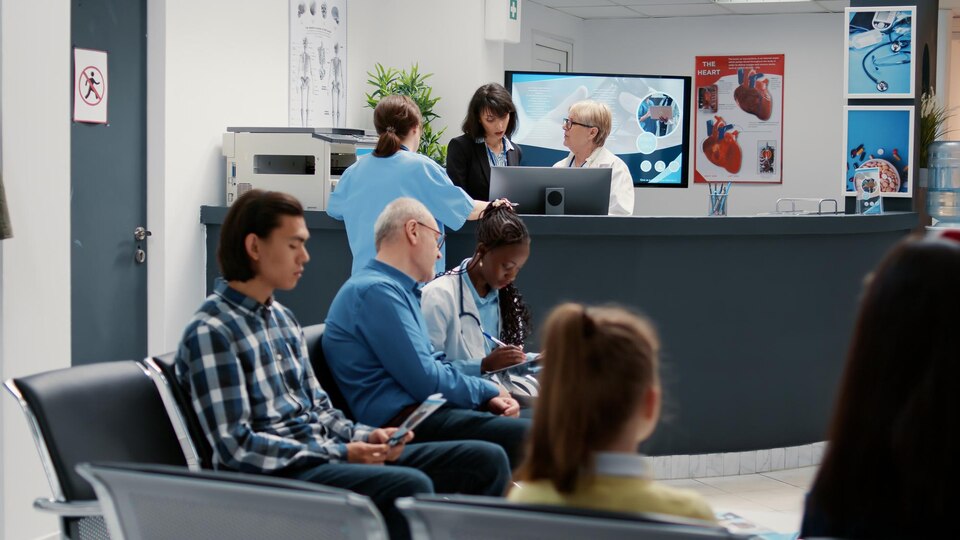Introduction
In healthcare, efficiency isn’t just a luxury—it’s a necessity. Streamlined processes directly impact patient experience, operational costs, and, ultimately, patient outcomes. With increasing patient expectations and a growing focus on high-quality, efficient care, healthcare providers are looking to Business Process Management (BPM) to improve the patient journey, especially during the crucial intake process. By reducing bottlenecks, optimizing workflows, and automating tasks, BPM can help healthcare facilities enhance patient satisfaction while reducing wait times.
In this blog, we’ll explore how BPM can transform the patient intake process, tackling common challenges and providing actionable solutions to streamline operations for faster, more effective care.

The Challenges of Patient Intake in Healthcare
The patient intake process can often be a source of frustration for both patients and healthcare providers due to several persistent challenges:
- Lengthy Wait Times: Long waits can result in lower patient satisfaction, missed appointments, and, in some cases, delays in diagnosis and treatment.
- Paperwork Overload: Manual data entry and redundant forms create inefficiencies and increase the likelihood of errors.
- Communication Gaps: Poor coordination between departments can slow down patient flow and disrupt the intake process.
- Compliance Requirements: Healthcare providers must ensure data security and HIPAA compliance, which adds complexity to patient data collection and processing.
Each of these challenges can be addressed with effective BPM strategies, ultimately making the patient intake process faster, more efficient, and more patient-friendly.
How BPM Transforms the Patient Intake Process
Let’s explore specific BPM strategies to improve patient intake, reduce wait times, and elevate the quality of care.

1. Digitize and Automate Patient Intake Forms
Problem: Manual forms are time-consuming for both patients and staff, increasing the risk of data errors and delays.
BPM Solution: Implement digital forms and automate data entry.
- Online Pre-Registration: Allow patients to fill out forms online before their visit. This reduces the time they spend at the clinic and helps ensure that necessary information is captured accurately.
- Automated Data Capture: Use BPM software to automatically capture and organize patient data, reducing the need for manual entry and minimizing errors.
- Integration with EHR Systems: Connect intake forms to electronic health records (EHR) systems to instantly update patient information, saving time and improving data accuracy.
By digitizing intake forms and automating data capture, healthcare providers can reduce bottlenecks at the front desk, allowing staff to focus on patient interactions instead of paperwork.

2. Streamline Workflow for Check-In and Triage
Problem: The check-in process often involves multiple steps that require coordination, leading to delays and inefficiencies.
BPM Solution: Optimize workflows for faster patient check-in and triage.
- Automated Check-In Kiosks: Provide self-service kiosks where patients can check in, update their information, and pay for services if necessary. This reduces the workload on front-desk staff and speeds up check-ins.
- Dynamic Queue Management: Use BPM tools to monitor and manage patient flow, assigning priority based on urgency, appointment type, or patient needs.
- Real-Time Notifications for Staff: Enable automated notifications to alert medical staff when patients are ready for the next step, ensuring efficient handoffs and reducing idle time.
Streamlining check-in and triage workflows through BPM enhances staff efficiency, shortens wait times, and improves the overall experience for patients.

3. Implement Patient Tracking and Real-Time Status Updates
Problem: Patients often feel frustrated when they’re unsure of how long they’ll need to wait, which negatively impacts their experience.
BPM Solution: Enable patient tracking and real-time status updates.
- Patient Tracking Systems: Use BPM software to track patient locations in real-time within the healthcare facility, allowing staff to monitor patient movement and minimize wait times.
- Mobile Notifications for Patients: Send real-time updates to patients’ phones, notifying them of estimated wait times, appointment status, or when they’ll be seen next.
- Visibility for Family Members: Offer status updates for family members in waiting areas, improving transparency and reducing frustration.
By keeping patients informed about their status, healthcare providers can reduce perceived wait times and enhance the overall experience.

4. Standardize and Simplify Triage Protocols
Problem: Inconsistent triage practices can lead to delays, as patients are often processed based on varying priorities.
BPM Solution: Use BPM to standardize triage protocols for consistency and efficiency.
- Develop Standard Operating Procedures (SOPs): Create clear guidelines for triage to ensure that all staff members follow the same procedures, reducing confusion and improving patient flow.
- Automate Triage Routing: Leverage BPM software to automatically assign patients to the appropriate medical staff based on triage criteria, reducing decision-making time and ensuring the most urgent cases are prioritized.
- Monitor Triage Effectiveness: Use BPM analytics to evaluate the effectiveness of triage protocols, identifying opportunities to improve or adjust as needed.
By standardizing triage practices, healthcare facilities can reduce delays, prioritize critical cases, and enhance the quality of care.
5. Enhance Communication Between Departments
Problem: Communication breakdowns between departments can lead to delays, especially if staff are unaware of a patient’s status or next steps in their care journey.
BPM Solution: Improve inter-departmental communication for seamless patient flow.
- Centralized Communication Platforms: Implement BPM software that acts as a central hub for communication, allowing departments to easily share information and updates about patient status.
- Automated Alerts for Patient Movement: Set up automated alerts that notify relevant departments when a patient is ready to move to the next stage of care.
- Real-Time Process Tracking: Track the entire patient journey in real-time, providing staff with a clear view of where each patient is in the process, reducing wait times due to miscommunication.
Effective communication between departments ensures that patients don’t experience unnecessary delays, supporting a more efficient and patient-centered approach to care.
The Benefits of BPM in Healthcare Intake Processes
Implementing BPM in healthcare has a range of benefits, including:
Reduced Wait Times
Faster patient intake means reduced waiting periods, contributing to higher patient satisfaction.
Improved Data Accuracy
Automated data capture minimizes errors and ensures that patient records are updated accurately and efficiently.
Increased Staff Productivity
By automating repetitive tasks, staff can focus on direct patient care rather than administrative work.
Better Patient Experience
Patients experience smoother, quicker, and more transparent intake processes, which positively impacts their overall perception of the facility.
Enhanced Compliance and Security
BPM software can help healthcare providers meet compliance standards, ensuring that sensitive patient data is protected and managed according to regulations.

BPM offers a powerful approach to address the challenges of patient intake, transforming a traditionally slow and frustrating process into one that is efficient, transparent, and patient-centered. By embracing digital forms, automating workflows, enhancing communication, and optimizing triage, healthcare providers can reduce wait times and improve both patient and staff experiences.
As healthcare continues to evolve, the role of BPM will only grow in importance, helping organizations streamline operations, enhance patient care, and meet the ever-increasing demands of the modern healthcare landscape.


